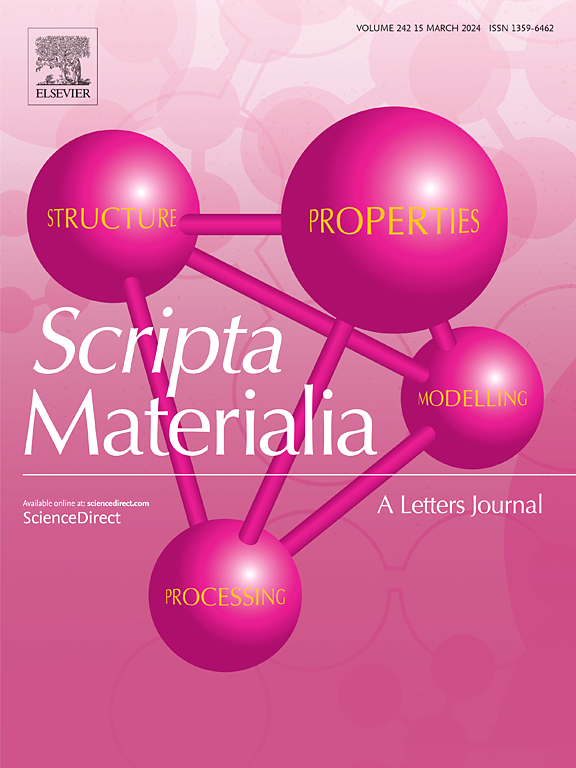Functional fatigue behavior of [101]- and [111]-oriented superelastic NiTi micropillars
IF 5.3
2区 材料科学
Q2 MATERIALS SCIENCE, MULTIDISCIPLINARY
引用次数: 0
Abstract
Cuboidal micropillars of superelastic NiTi shape memory alloy with [101] and [111] orientations were fabricated using focused ion beam milling and then subjected to cyclic compression. The results indicate that [101]-oriented NiTi is more prone to functional degradation than its [111]-oriented counterpart due to pronounced kinematic irreversibility. In the former, the irreversibility is driven by both dislocation activity and retained martensite, whereas in the latter, degradation is governed exclusively by dislocation accumulation. Cyclic compression causes a significant reduction in the forward transformation stress in the [101] orientation, which disappears upon the removal of retained martensite through heating. In contrast, the transformation stress in the [111] orientation remains broadly invariant, due to the absence of retained martensite, highlighting its dominant role in lowering the forward transformation stress. The work reveals the importance of crystallographic orientations in bringing changes in the fatigue performance and mechanisms of the material at the microscale.

[101]和[111]取向超弹性NiTi微柱的功能疲劳行为
采用聚焦离子束铣削技术制备了具有[101]和[111]取向的超弹性NiTi形状记忆合金的立方体微柱,并对其进行了循环压缩。结果表明,[101]定向NiTi比[111]定向NiTi更容易发生功能退化,这是由于其明显的运动不可逆性。在前者中,不可逆性是由位错活动和保留的马氏体共同驱动的,而在后者中,降解完全由位错积累控制。循环压缩使[101]取向的正向转变应力显著降低,当加热去除残余马氏体后,正向转变应力消失。相反,由于没有马氏体残留,[111]取向的转变应力基本保持不变,这突出了马氏体在降低正向转变应力方面的主导作用。这项工作揭示了晶体取向在微观尺度上改变材料的疲劳性能和机制的重要性。
本文章由计算机程序翻译,如有差异,请以英文原文为准。
求助全文
约1分钟内获得全文
求助全文
来源期刊

Scripta Materialia
工程技术-材料科学:综合
CiteScore
11.40
自引率
5.00%
发文量
581
审稿时长
34 days
期刊介绍:
Scripta Materialia is a LETTERS journal of Acta Materialia, providing a forum for the rapid publication of short communications on the relationship between the structure and the properties of inorganic materials. The emphasis is on originality rather than incremental research. Short reports on the development of materials with novel or substantially improved properties are also welcomed. Emphasis is on either the functional or mechanical behavior of metals, ceramics and semiconductors at all length scales.
 求助内容:
求助内容: 应助结果提醒方式:
应助结果提醒方式:


